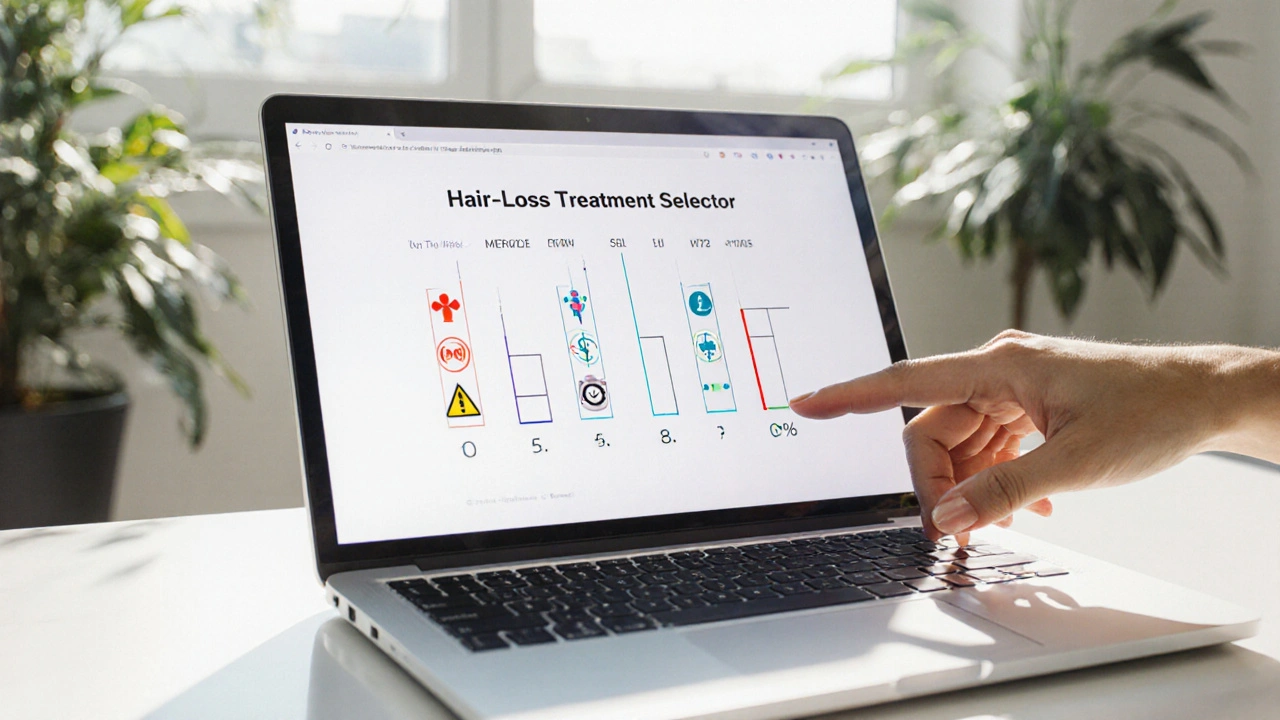Minoxidil vs Finasteride: What’s the Real Difference?
When talking about minoxidil vs finasteride, the debate centers on two of the most popular ways to tackle hair loss, especially the common pattern known as androgenetic alopecia. Also called male‑pattern baldness, this condition affects millions and is driven by a hormone called DHT, dihydrotestosterone, a derivative of testosterone that shrinks hair follicles. The goal of any treatment is to restore hair growth by either stimulating the scalp or blocking DHT. Below you’ll see how each approach lines up with the needs of everyday users.
How the Two Treatments Work and What Sets Them Apart
Minoxidil is a topical solution, applied directly to the scalp to widen blood vessels and improve nutrient delivery to hair follicles. This increased blood flow can revive dormant follicles, leading to thicker strands within a few months. In contrast, finasteride is an oral medication, taken daily to inhibit the enzyme 5‑α‑reductase, which converts testosterone into DHT. By lowering DHT levels systemically, finasteride reduces follicle miniaturization at its source. The two methods therefore form a classic mechanism‑vs‑delivery pair: one attacks the problem from the scalp surface, the other from inside the bloodstream.
Both drugs have proven track records, but they also bring distinct considerations. Minoxidil’s side‑effects are usually limited to scalp irritation, itching, or a temporary shedding phase as old hairs fall out to make room for new growth. Finasteride, being systemic, can cause sexual side‑effects such as reduced libido or erectile changes in a small percentage of users, and a few may notice mood shifts. Cost plays a role too: minoxidil is often cheaper and available over‑the‑counter, while finasteride typically requires a prescription and may carry higher long‑term expenses. Understanding these trade‑offs helps you match a product to your lifestyle, budget, and tolerance for potential side‑effects.
Choosing between them isn’t an either‑or decision for many. Some clinicians recommend a combined regimen—using topical minoxidil to boost scalp circulation while taking finasteride to keep DHT levels low. This synergy can accelerate results, especially for those with extensive thinning. However, combining therapies also means monitoring both sets of side‑effects and ensuring consistent use. If you’re hesitant about prescription meds, starting with minoxidil gives you a low‑risk entry point. If you’ve tried over‑the‑counter options without success, finasteride might be the next logical step.
Regardless of the path you pick, a few practical steps can improve outcomes. Apply minoxidil to a clean, dry scalp twice daily, and give it at least eight weeks before judging efficacy. For finasteride, keep regular appointments with your healthcare provider to track hormone levels and any adverse reactions. Pair either treatment with good hair‑care habits—gentle shampoos, reduced heat styling, and a balanced diet rich in biotin, zinc, and omega‑3 fatty acids—to support overall follicle health.
Below you’ll find a curated list of articles that dive deeper into each aspect—mechanisms, side‑effects, costs, and real‑world user experiences—so you can make an informed decision about which approach aligns best with your goals.
Diarex vs Top Hair Loss Alternatives: Pros, Cons & Best Picks
- DARREN LLOYD
- 14
Compare Diarex with top hair loss alternatives, see pros, cons, pricing, side effects, and pick the best option for your needs.
READ MORE
